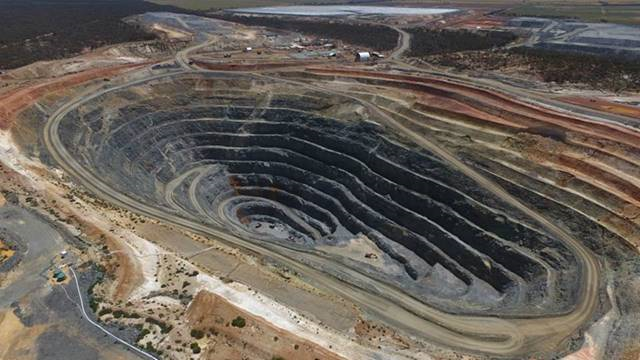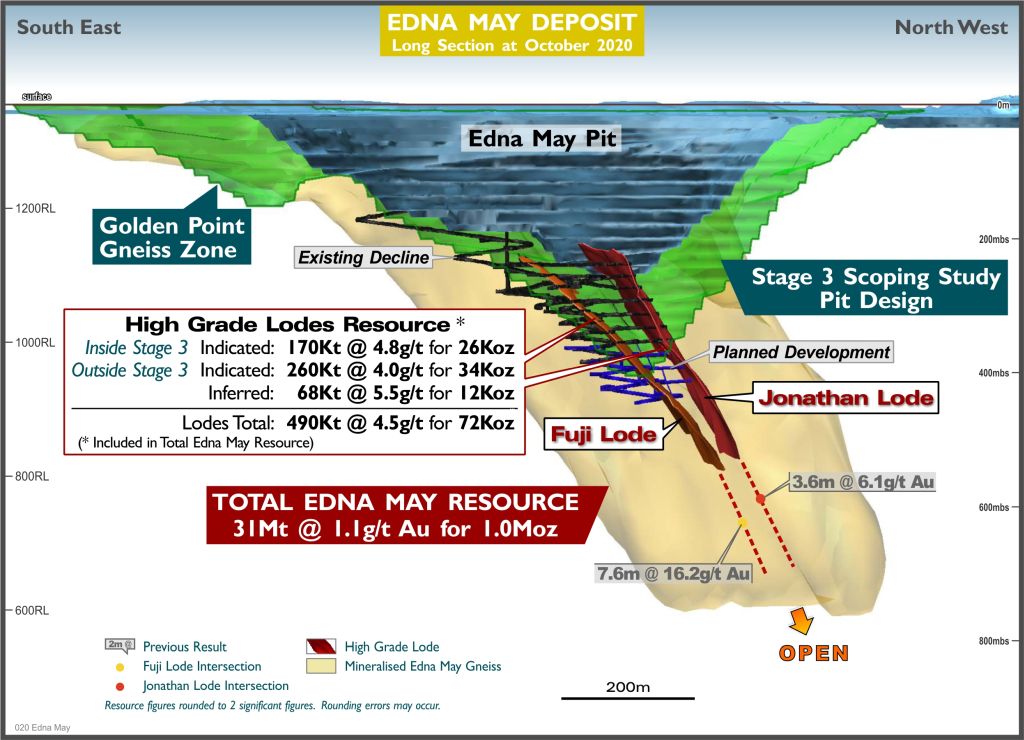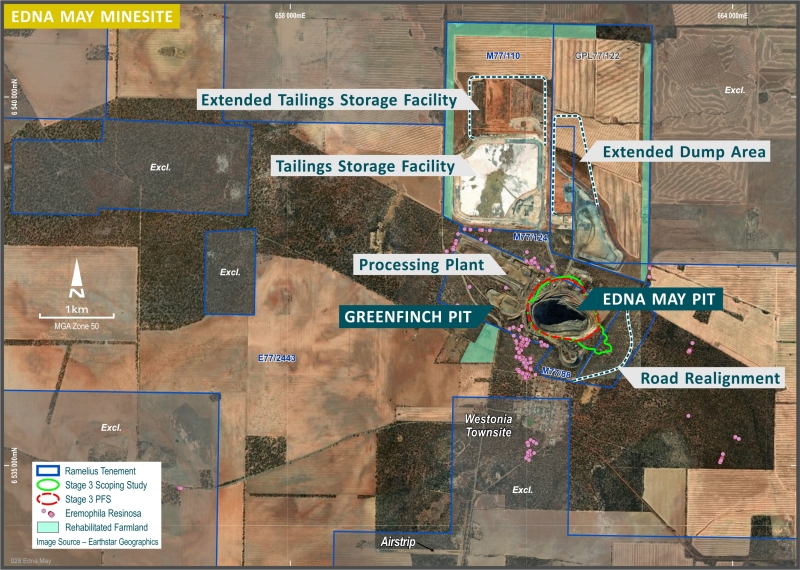Edna May Gold Mine
Ramelius acquired the Edna May Gold Mine on 1 October 2017 from Evolution Mining Ltd, as an operating open pit gold operation which was mined historically and by ACM Gold in the late 1980’s. The Stage 2 open pit operations were commenced by Catalpa Resources in 2010, which merged with Conquest in 2011 forming Evolution Mining.
The deposit has recorded production of over 1 million ounces, with over 500,000 ounces produced since 2011 under Evolution ownership. Annual production since 2011 has ranged from 66koz to 99koz.
Historic underground mining between 1911 and 1948 recorded production of 570 kt at a grade of 19.3 g/t. Up to 7 high grade quartz ‘reefs’ were mined, reaching a depth of 250m.

Edna May Stage 2 Pit
Geology
The Edna May deposit is located within the Westonia Greenstone Belt, within the Southern Cross Province of Western Australia’s Archaean Yilgarn Craton.
Mineralisation is hosted by the east-west striking, north dipping, Edna May Gneiss (EMG), which has a currently defined strike length of 1km, width of 140m and drilled depth extent of 700m. The EMG is a tonalitic quartz-feldspar-biotite gneiss interpreted to be a strongly metamorphosed granitic intrusion. Mafic-ultramafic amphibolites form the hangingwall and footwall units.
Gold mineralisation is widespread within the EMG and related to two quartz vein sets. One set comprises of widespread, thin, sheeted veins in a ladder of stockwork style, generally sub-parallel to stratigraphy. The second set are less frequent, larger veins which cross-cut the EMG and have much greater continuity. These veins formed the basis of the historical underground ‘reefs’ and the two significant lodes defined in the early 2018 underground infill drilling programme.
These lodes have typical dimensions of 2-5m thickness, strike lengths of 80-110m and currently drilled dip extents of 200m. Associated visible gold is commonly seen in drill core.
Mineral Resource
The latest Mineral Resource stood at 30,000,000t @ 1.0 g/t for 950,000 oz (Refer 2 September 2024 ASX Release).
Ore Reserves
The latest Ore Reserves stood at 37,000t @ 1.4 g/t for 1,700 oz (Refer 2 September 2024 ASX Release).

Edna May long section – existing pit, Underground mine & Scoping Study Stage 3 pit
Mining
The major Stage 2 open pit cutback was completed in late 2018 to a vertical depth of 250m. Significant ore stockpiles were generated in the last 18 months of mining.
In October 2018 the Edna May underground project was approved by the Ramelius Board and operations commenced in the 2019 year. The underground targets the two major lodes defined by underground infill drilling in early 2018.
Development of pre-existing decline below the open pit has been completed and the underground operation now into full stope production.
Edna May Stage 3 Update
Increased costs, both in capital and operating areas, reduced the returns on the Project to a level below Ramelius’ internal hurdle rate. Following detailed review and consideration by the Board, the Project has been put on hold, except for environmental permitting, which is continuing to allow for a quick re-start in any lower cost/higher gold price environment in the future. The Company is focused on deploying capital to attain higher returns elsewhere in the project portfolio. For more information, please refer to the Edna May Stage 3 PFS Update (January 2023).

Milling
The Edna May mill is a 2.9 million tonne per annum (Mtpa) conventional CIL gold plant comprising of 2 stage crushing, SAG and Ball mill, gravity circuit and leach. 50% of Edna May gold is recovered via the gravity circuit. Total recovery is around 93%.
Mill feed is now being sourced from the Edna May underground, Marda open pit gold mine, Tampia open pit gold mine and stockpiled ore.
Greenfinch Offset
To view the Edna May Operations Compliance Report for 2025 please Click HERE.
